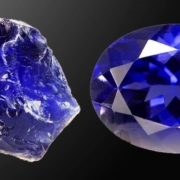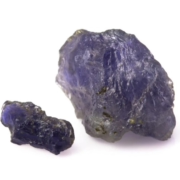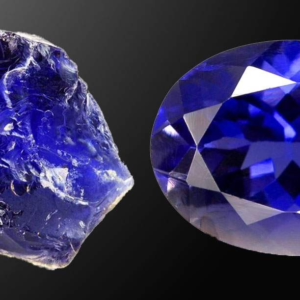cordierite
Cordierite is a silicate mineral that forms in shades of blue, purple, or gray and is primarily known for its unique pleochroic properties. This means that it can appear in different colors when viewed from different angles, typically showing blue, violet, or gray. When transparent, it is often cut into gemstones known as iolite, which is a more familiar term for this mineral in jewelry and metaphysical uses.
Cordierite was first discovered in the early 19th century and is named after French geologist Louis Cordier. It’s a relatively hard mineral, with a Mohs hardness of 7-7.5, which makes it suitable for use in various types of jewelry. The blue and violet varieties are especially prized for their rich color, but cordierite can also appear in a more neutral gray.
The mineral forms in igneous and metamorphic rocks, especially in areas of high temperature and pressure, such as within granite and gneiss. Cordierite can also be found in some metamorphosed sedimentary rocks.
In metaphysical terms, cordierite, particularly in its iolite form, is believed to enhance intuition, mental clarity, and spiritual awareness. It is thought to open the third eye chakra and is often used in meditation to help access deeper states of consciousness. Cordierite is also considered a stone of emotional healing, helping to release past emotional wounds and promoting a sense of inner peace.
In the healing context, iolite (cordierite) is said to support the nervous system, reduce stress, and improve mental clarity, making it a popular stone for those looking to balance their emotional and spiritual well-being.



Leave a Reply
Want to join the discussion?Feel free to contribute!